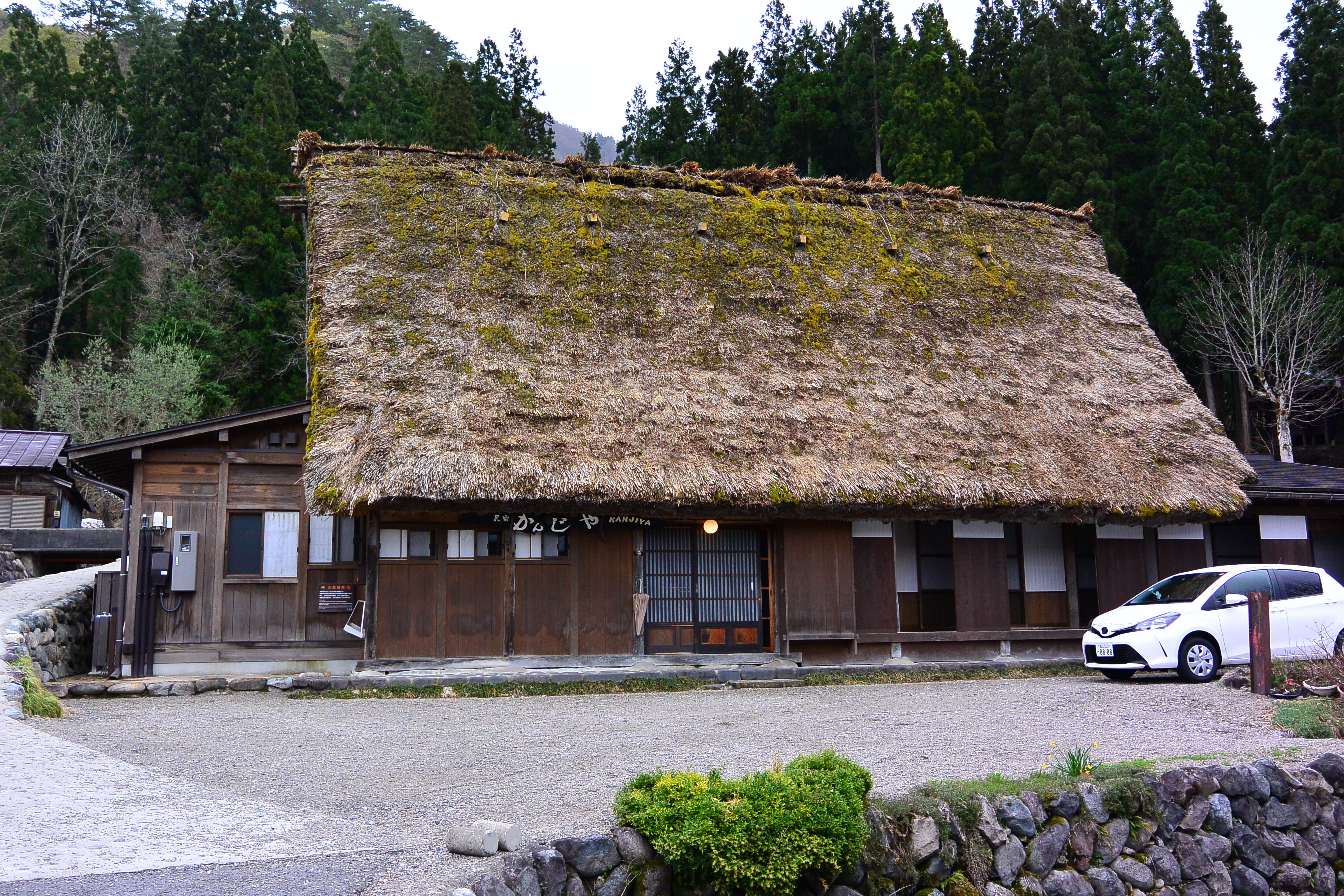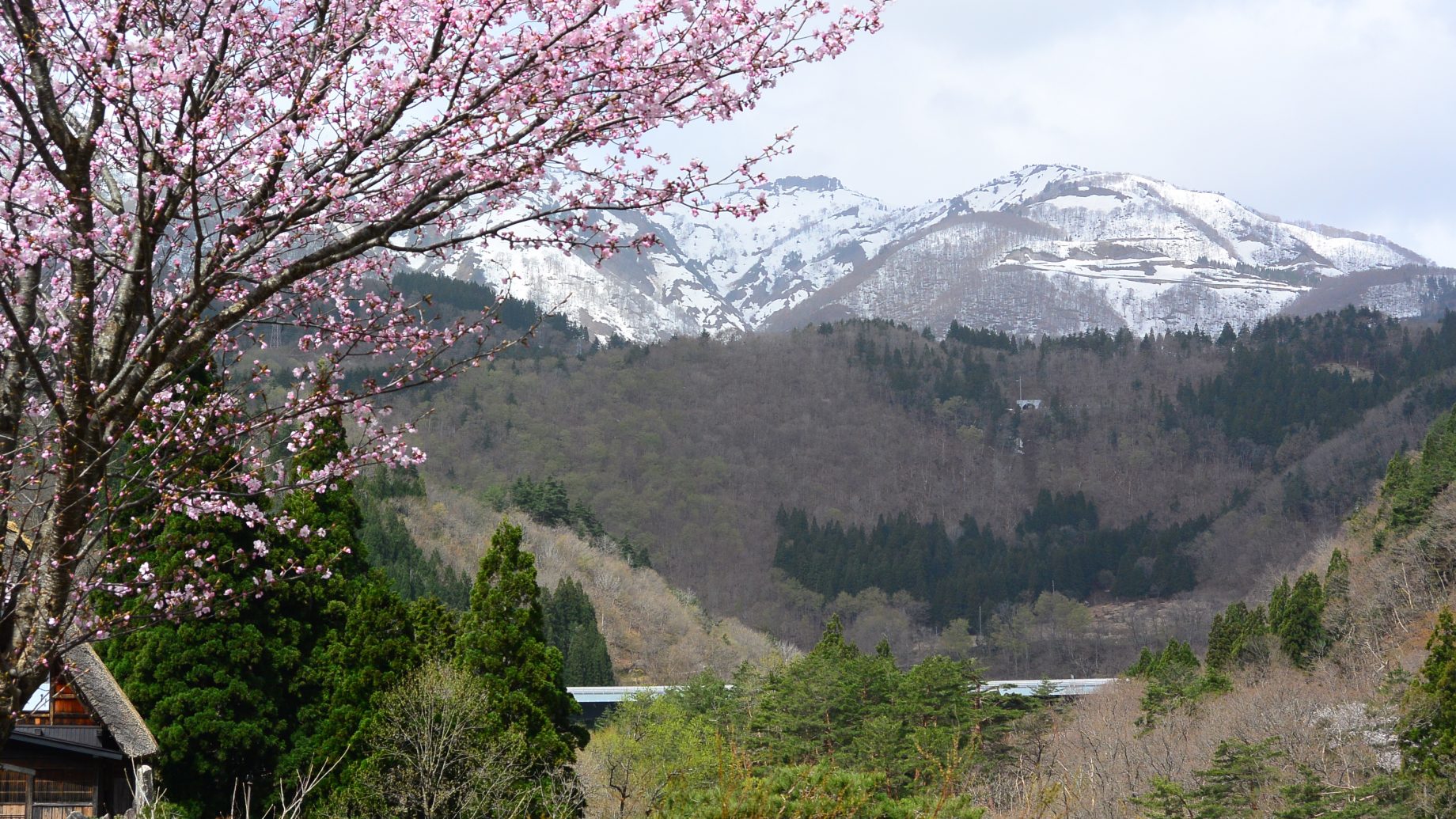The sound of rain falling throughout the night was our constant companion. A grey dawn heralded the start of a new day in the valley, with surrounding hilltops shrouded in clouds. The rain had started late in the afternoon yesterday and continued non-stop through the night.
The recently ploughed rice paddies below our ryokan had filled with water overnight and we speculated whether this would set back planting until they dried out. It could have been a good thing, soaking the ground in preparation for planting. We may never know.

The first leg of our journey was on a secondary rail line that followed the valley down from the hills to connect with a major JR line that would take us to Nagoya. The gently flowing, crystal clear stream we had followed during our walk yesterday had grown with the overnight rains into a muddy, raging torrent of turbulent water crashing into the large granite rocks that were scattered in its path.

A brief stopover in Nagoya gave us time to grab a coffee and lunch before finding our next connecting train – this would deliver us closer to Takayama. Typically the intercity trains are configured so passengers are seated in the direction the train is travelling. An announcement was made that the initial 20 minutes of our journey would be with the seats facing the wrong way, then a change of direction would have us all facing the right way for the remaining 2 hours. This message didn’t get through to a number of passengers in our carriage who were too focused on themselves to hear the announcements made (twice) on the public address system. They busied themselves turning the seats around, then groaned when they had to repeat the same process 20 minutes later.

The rain has stopped for the time being and there are even patches (however small) of blue sky appearing through the grey. Our train journey returned to the steep hill country and with it the white water rapids fed by overnight rains.

We noticed as our journey progressed deeper and deeper into the hills that more and more tea plantations came into view, replacing the previously ever-present rice fields that seem to occupy every available piece of flat land. At one ryokan we stayed in the lady in charge harvested and roasted her own tea (from plants growing in her garden) every spring as the new shoots started appearing. Little seems to be wasted, and no piece of flat land goes unattended.

After our final train trip for the day, which uncharacteristically arrived 15 minutes late, we just managed to find and board our bus prior to it departing. Actually, the door was closing as we arrived and we convinced the driver to let us on before he set off fortunately the tickets had been pre-purchased and we had allocated seats. This bus journey took us through quite a series of tunnels as we made our way westward to our destination. At one tunnel it was announced that we were passing under a mountain that defined the way the rivers flowed in this part of Japan, with all the rivers on the eastern side of the range flowing into the Pacific Ocean and others on the western side flowing into the Sea of Japan. The rivers in these parts are fed from snow melt throughout the year, as the mountains have a permanent cover all year round.
The rain started again when we emerged from the tunnel and, yes, the rivers were flowing westward. A few tunnels later and we started noticing lots of snow on the surrounding mountain tops. We had entered into a valley ringed by snow-covered mountains and this, as it turned out, was where our destination for the day would be: Shirakawa-go.
There was a scramble to get off the bus and find shelter from the rain. Wendy found an English map in the information centre and just as we were heading off the rain stopped. Our ryokan for the evening was about 1 kilometre away towards the other end of this World Heritage-listed village.
To quote the information booklet, “Shirakawa-go is a mountain village located in the Ryohaku mountains. It is best known for a building style known as gassho-zukuri, thatched-roof farm houses”.

The village was popular with tourists when we arrived, but one sensed that many were making their way back to the bus terminus as their time sightseeing came to an end. Interestingly we noticed a number of places in town where the winter snow had been piled up, possibly after it had been cleared from the narrow roads. It was all a bit muddy, but suggested that the temperature here hasn’t really warmed up yet.
The river that flows to the south of the village was flowing vigorously after the overnight rains. We suspected it would be quite icy with all the snow on the surrounding mountains.
Our accommodation for the night is one of the many thatched buildings around town, set away from the main street where many of the tourists seem to gather. Hopefully the thick thatched roof has excellent insulation properties, as a cold night is most likely.

With both darkness descending and the cold of the night starting to blanket the valley, we will save our sightseeing for tomorrow.
We have just read a notice in the foyer of our ryokan that makes mention of the unusually high number of bears active in and around the village at the moment. Visitors are warned not to venture out at night and to make plenty of noise around dusk and early morning to be on the safe side. Knowing there are bears about, and that we are separated from them by two rice paper-thin walls is of little comfort. We might take it in turns to sleep while the other stands guard tonight!
